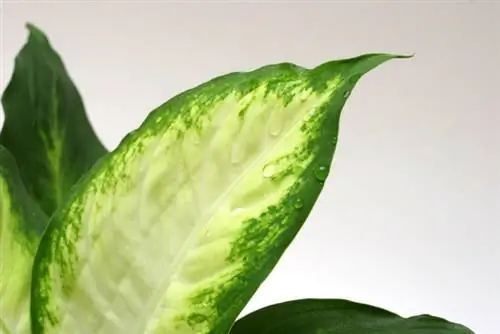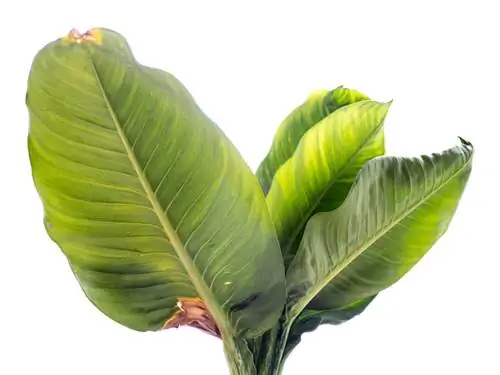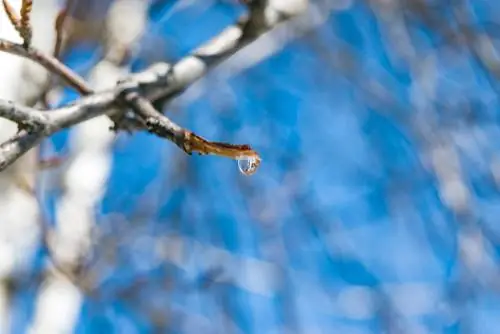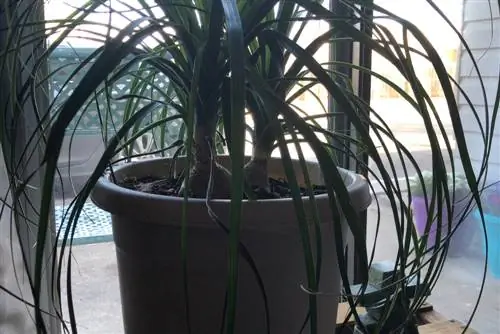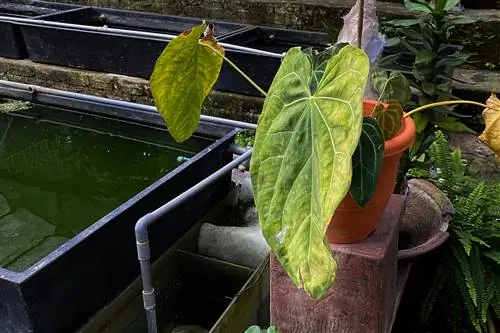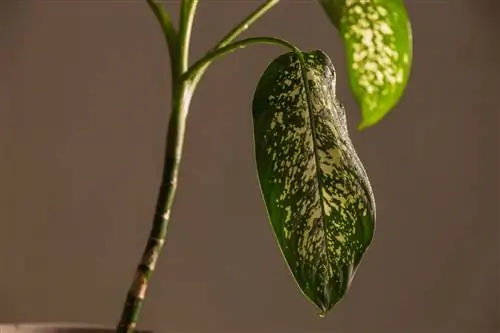- Author admin [email protected].
- Public 2023-12-16 16:46.
- Last modified 2025-01-23 11:21.
Dieffenbachias are among the most robust houseplants and are a popular, evergreen room decoration in offices and apartments. Even if you don't have the proverbial green thumb, you can still take care of this grateful arum plant. If drops of water suddenly appear on the leaves, this is just a sign of the incredible adaptability of the ornamental plant.
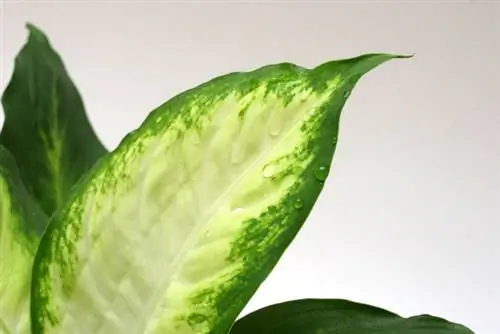
Why is my Dieffenbachia dripping and how can I prevent it?
If a Dieffenbachia is dripping, it is due to guttation, a process in which excess water and organic matter is excreted through the tips of the leaves. To prevent dripping, water more frequently but in smaller amounts so that no liquid comes out of the leaves.
Dripping after watering
The root system of the Dieffenbachia adapts excellently to the subsoil. In loose soil, the plant forms a network of fine hairy roots, while hydroponic plants only form a few, thicker roots. This ensures a water supply adapted to the soil.
If you water heavily, the Dieffenbachia absorbs as much water as possible, sometimes even more than it can evaporate through the leaves. But what to do with the surplus? The Dieffenbachia simply allows the liquid to drip out through the pores on the tips of the leaves. In technical jargon, this process is known as guttation.
In this way, it not only excretes moisture, but also a variety of organic substances and water-soluble pesticides. For example, if you have put fertilizer or insect repellent sticks (€31.00 on Amazon) into the substrate, these active ingredients can be detected in the dripping liquid.
Prevent guttation drops
Since this liquid is only excreted if you suddenly water too much, you can effectively prevent the phenomenon by watering more often but less.
- Be sure to wait until no more liquid comes out of the leaves before watering.
- Take a thumb test: Only water when the top centimeters of the substrate feel dry.
- The hydroponics scoreboard recommends watering? Here, too, you can definitely wait another day.
Tip
Dieffenbachias are among the poisonous plants that can cause severe skin irritation. It is therefore better not to place them in rooms where children and pets have access. Wear gloves when caring for the arum plant.

